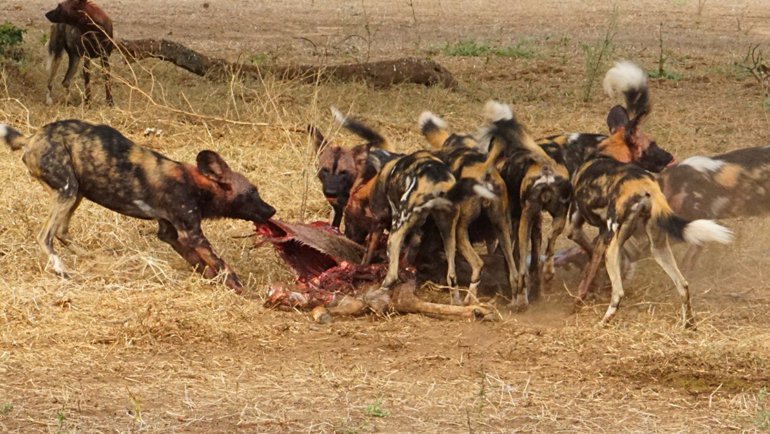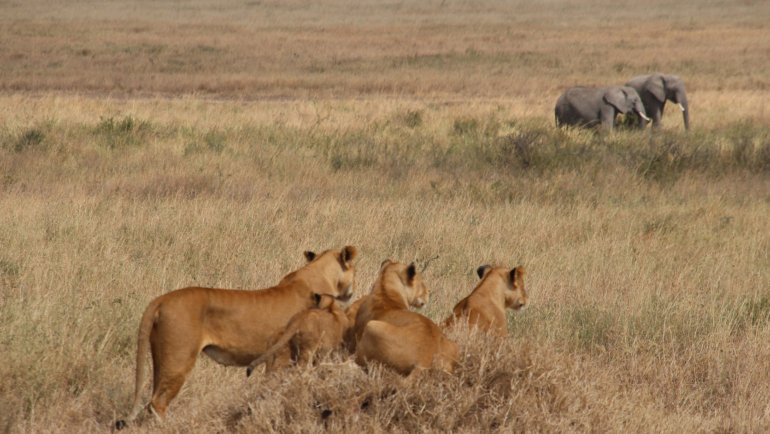Giraffes (Giraffa camelopardalis) are known for their long necks, which makes them the tallest animals in the world. They also have a hump on their backs like camels (although theirs are significantly smaller) and spotted patterns all over their body like leopards.
It’s due to the combination of these two body features from camels and leopards that made people refer to the giraffe as a ‘camel-leopard.’ It also explains why their scientific species’ name is “camelopardalis.”
When it comes to their body markings, one common question many people ask is, how many spots does a giraffe have? Fortunately, this article will address this query and provide additional details to help you better understand this giant animal.
How Many Spots Does a Giraffe Have?
An adult giraffe has at least 200 spots all over its body.
Different Giraffe Patterns
Although the uniqueness of a giraffe’s spot patterns is similar to the distinctiveness of the fingerprints on our hands, different subspecies of these giants share the same resemblance.
Therefore, scientists have concluded that giraffe members belonging to each of these nine subspecies listed below portray similar pattern characteristics.
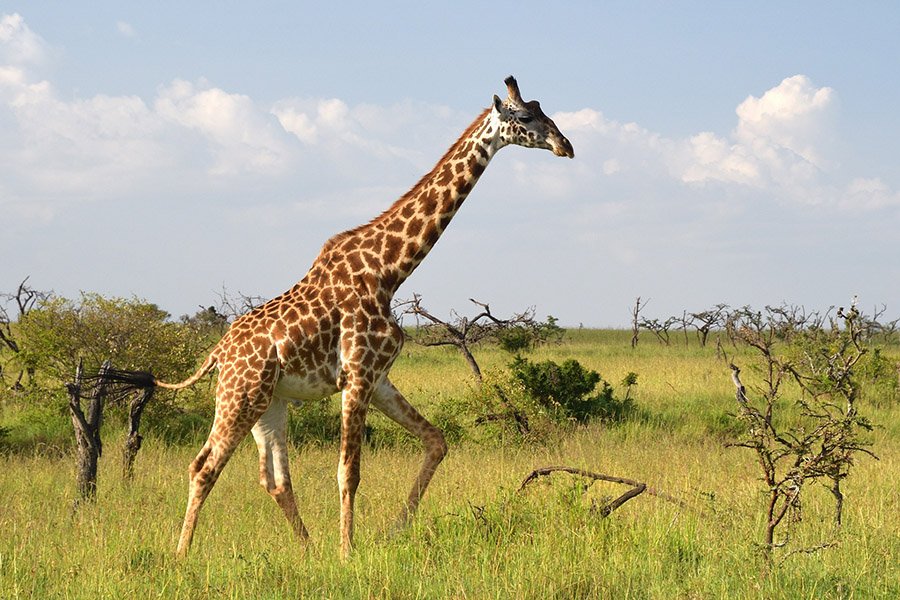
1. Masai Giraffe (Giraffa camelopardalis tippelskirchi)
This subspecies has the highest population, making it have various patterns. Their patterns include smooth and rounded, oval-shaped and carved, edged and loped.
Their spots usually resemble misaligned stars, vine leaves, or oak leaves.
2. Rothschild’s Giraffe (Giraffa camelopardalis rothschildi)
They have dark, large, and rectangular-shaped patterns with wavy edges and complete margins.
Their spots usually have sharp edges with pale, round streaks or lines or streaks between them. They also don’t reach their hooves.
3. Nubian Giraffe (Giraffa camelopardalis camelopardalis)
These giraffes also have rectangular-shaped spots but are chestnut-colored and sharply defined. A white line borders each pattern, and their belly is not covered with any spots.
4. Kordofan Giraffe (Giraffa camelopardalis antiquorum)
Their patterns are smaller and irregular since they are widely spread from each other. The giraffe has no spots below its hind limbs, also known as hocks.
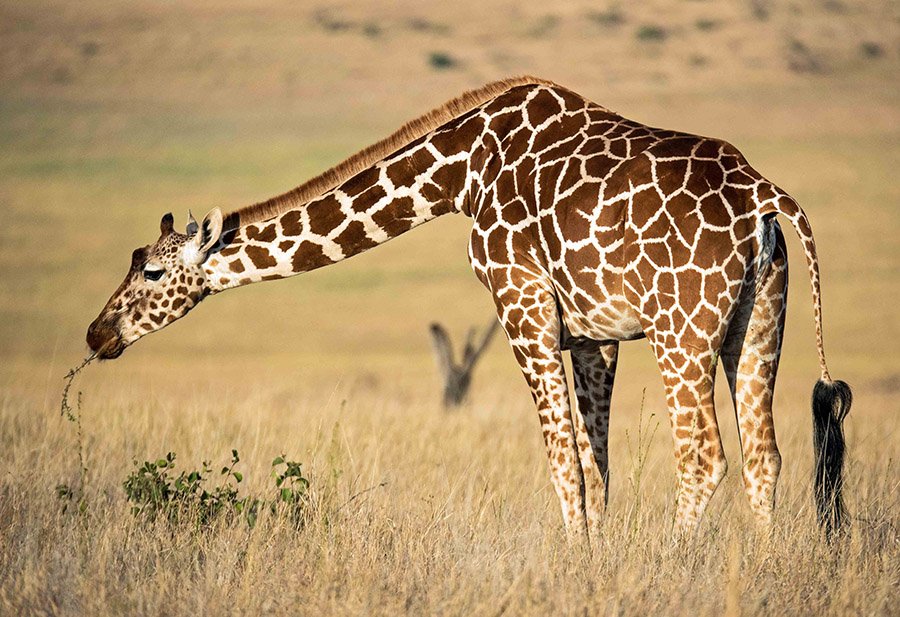
5. Reticulated Giraffe (Giraffa camelopardalis reticulata)
They have red-brown polygonal patterns that appear webbed/netted and are separated by narrow white lines.
6. Angolan Giraffe (Giraffa camelopardalis angolensis)
These giraffes have significant brown patterns with extensions or notches that are also present on their legs. However, the top part of their face is spotless.
7. West African Giraffe (Giraffa camelopardalis peralta)
These giraffes have bright fur covered in red or golden lobe-shaped patterns. They don’t have any spots on their belly or below their knees.
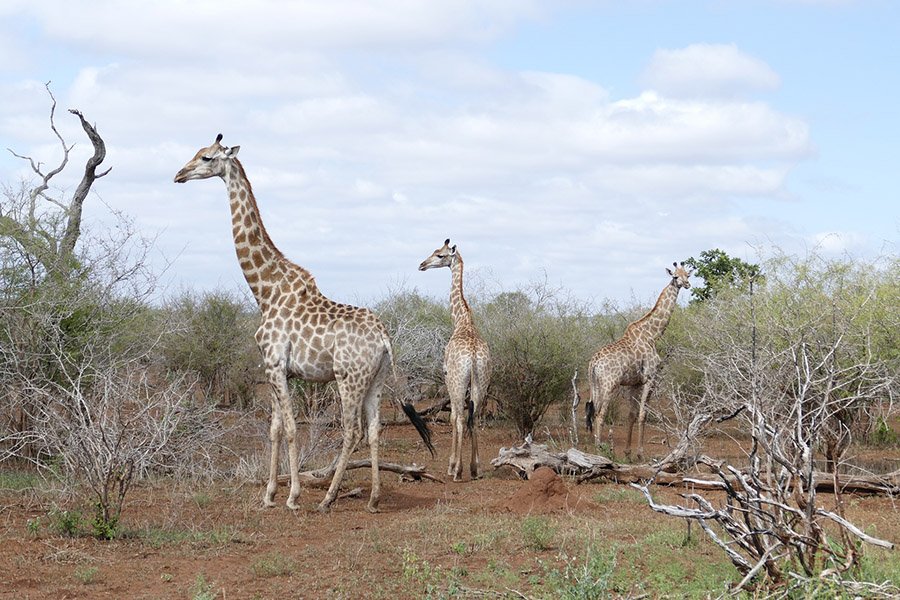
8. South African Giraffe (Giraffa camelopardalis giraffe)
They have dark red-tinged patterns, which are either star-shaped or like a rounded leaf on a golden-brown background. Their spots also cover their legs.
9. Thornicroft’s Giraffe (Giraffa camelopardalis thornicrofti)
These giraffes have reddish-brown and star-shaped patterns that cover the legs up to their knees.
Why Do Giraffes Have Spots?
Below are four main reasons giraffes have spots on their bodies and their essential purposes.
Social Identification
Giraffes are naturally social animals living in groups of 10-20 members called herds. Fortunately, nature has ensured that members of the same herd have similar patterns, although not completely identical. It makes it easier for them to recognize each other and maintain their social unit.
Since calves inherit their parents’ distinctive patterns, designs, and colors, mothers are able to identify their offspring among other calves in the herd.
It makes it easier for them to feed, protect and look after their young ones, which increases their survival chances.
Camouflage
The animal’s height makes it easy to spot from a distance, but their patterns help minimize this vulnerability by ensuring they can blend and camouflage with their habitats.
These giants are mainly found in the African Savannah regions where most of the vegetation, grasslands, is typically yellow, brown, and golden brown.
Therefore, most of their spots and background fur usually mimic the color of their habitats hence enabling them to camouflage efficiently.
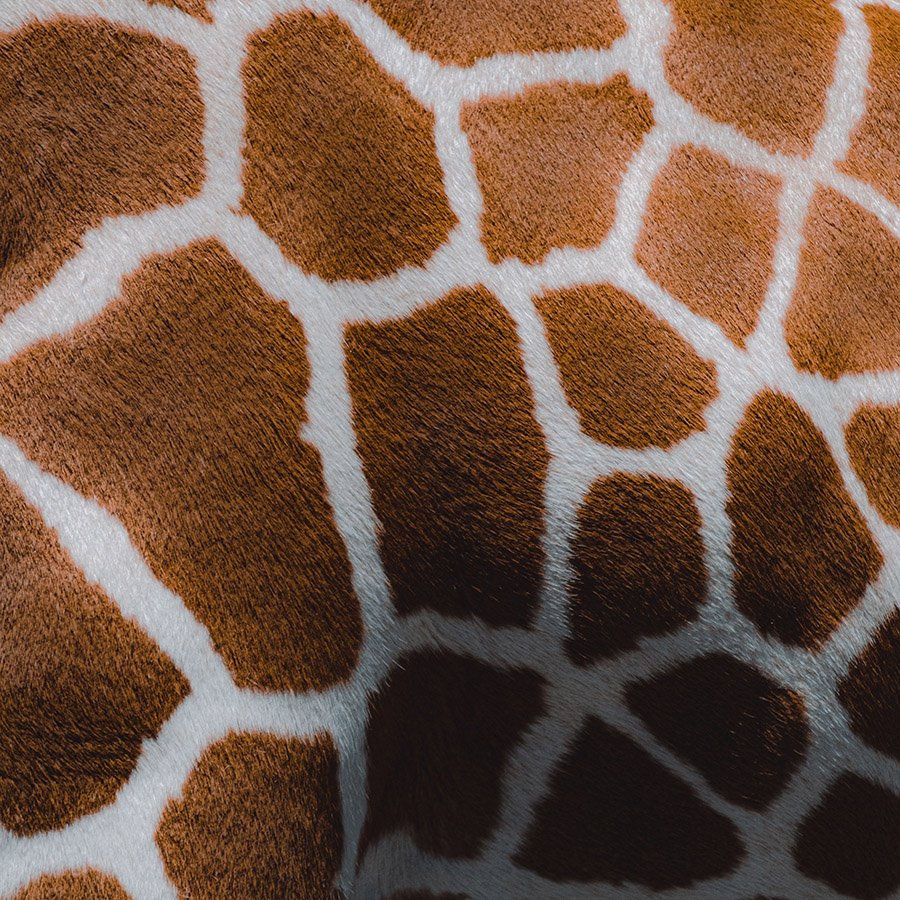
Age Indicators
We already know that each giraffe has unique spot patterns, which are helpful in its identification. Another way their spots are valuable is in determining their age.
Both humans, especially park wardens, wild animal researchers, and other giraffes, can determine the age of a particular giraffe by looking at its patterns. For instance, younger ones tend to have lighter and faintly defined markings.
As they grow older, the color of their spots tends to continually become darker and sharply defined due to prolonged sun exposure and an increase in melanin.
Heat Regulation
Unlike most animals that roll on the ground, swim/splash water on their backs, or relax on tree shades to cool themselves from the scorching sun and their habitat’s heat, giraffes don’t have the luxury to engage in any of these heat regulation tactics.
Fortunately, mother nature was kind to them by equipping these giants with patterns endowed with a high concentration of blood vessels beneath them. Blood movement in the capillaries under the spots helps regulate heat by releasing or distributing heat to the body.
Frequently Asked Questions
What Colors Are Giraffes?
All giraffe species are typically light, dark, or golden brown with shades of cream, but their color concentration varies according to their specific subspecies. However, there have been rare cases of white giraffes, with the last reported one being in Kenya.
This giraffe (popularly called an ‘albino giraffe’) suffered from a rare genetic condition known as Leucism, which caused its skin cells to lack melanin pigmentation.
Do Giraffes Have Stripes?
No, giraffes don’t have stripes. However, there is a rare animal called an Okapi (scientific name is Okapia johnstoni), also known as a Zebra giraffe, Forest giraffe, or Congolese giraffe (since it’s only found in DRC Congo’s rainforest, in Africa).
Although it’s not considered a giraffe, it belongs to the Giraffidae family (due to its slightly long neck), which makes it the only close relative of giraffes. It almost resembles a zebra due to the white stripes covering its dark brown fur on its legs and the zebra-like body physique.
Are There Giraffes Without Spots?
The only giraffe without spots was the ‘Albino giraffe’ in Kenya which was white and spotless due to its rare genetic condition, Leucism.
Do Giraffes Have Fur?
Yes, giraffes have short and dense fur covered by their distinctive spot patterns.
Final Thoughts
Giraffes are among the unique creatures on earth due to their height and spots. Although all the nine sub-species of these giants have some varying differences in their body patterns, they all serve the same purposes.

